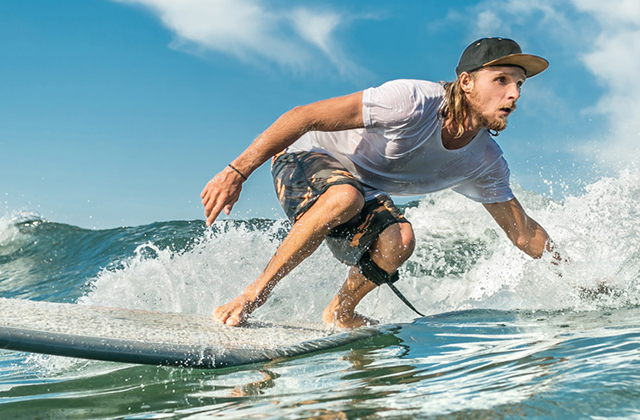Surfing is one of life’s greatest sports provided a surfing app. It’s a challenging workout, it allows you to spend time in the sun and on the water, and you don’t need to invest in a lot of equipment to get started. That said, having the right gear will make the sport more fun and easier on your body. Read on to learn what kind of equipment you need to get started in this great pastime.
The Right Gear Makes All The Difference
Almost every sport requires certain equipment. For surfing that obviously means a board. But what else? Choosing the right gear can make surfing safer, more fun, and keep you out on the waves for a longer period of time than without it.
To choose gear, you first need to determine where and when you’ll be catching a wave. The climate, location, typical wave patterns, and which seasons you’ll be surfing in all affect the type of equipment you’ll use. How frequently you plan to surf will also affect your choices and how much you’ll want to invest in gear.
Basic Surf Gear
Surfboards. We’ll start with the basics. If you’re going to take up surfing and want to invest in your own equipment you need a board. They come in many styles and lengths. To find the right one you’ll need to take into account:
Your height. For beginners, the longer, the better. Longer boards make paddling easier. Start with one that is 1-2 feet longer than you are tall.
Your weight. A 2.5″-3″ thickness works well for most people, but you may want to try boards that are thicker or thinner than that based on your weight. A thicker one floats better than a thinner one, making it easier to paddle and glide on the waves.
Board Width. Wider boards are more stable than narrower ones. So, if you’re new to the sport or want a more forgiving ride, opt for a wider style.
Type of Surfing. What type of surfing you plan to do will affect which board you choose. You’ll have your choice of Shortboards and Thrusters, Longboards or Malibus, Fish, Gun,s and even stand-up paddleboards. Talk to local shop owners or surfers about which styles work best in local conditions.
Wetsuits. Unless you’re planning to surf only in tropical waters, you’ll want to invest in a wetsuit. Otherwise you’ll simply get too cold to be out on the water for very long. You’ll have your choice of full wetsuits, convertible suits where the arms detach, or “shorties” which have both short arms and short legs.
Protective Gear. There’s a variety of protective gear available that will make your surf experiences more enjoyable and save you from some nasty after effects.
Rash Vest. These vests are great for wearing under wetsuits or on their own. They protect the underarms from getting too irritated from paddling, can be used as an extra layer of insulation from the cold, and can protect your skin from strong UV rays.
Boots, Gloves and Hoods. All three of these add-ons will keep your extremities warm, just like a wetsuit keeps your core warm.
Surf Wax or Traction Pads. Surfboards are slick and they are even more slippery once they get wet. This works well for gliding across the water, but it also makes it hard to keep your grip on the surface. That’s why surfers wax the topside of their boards. Surf wax provides an area of grip for the feet so you don’t slip right off. You can also use traction pads for the same effect. When buying wax, make sure it’s made for the conditions you’ll be in, particularly the water temperature. If you’re buying the wax local to where you’ll be surfing they should have the right kind in stock. If you’re buying online, check the water temperature rating.
Leg Ropes or Leashes. Leg ropes are for your own safety as well as others. These straps attach to the back end of the surfboard at one end, and to your back ankle on the other end. This keeps the board with you when you fall off instead of hitting other surfers or floating away. Leashes come in various diameters and lengths. For beginners, it’s safe to choose one that is about 1-2 feet longer than the length of your board.
That’s it! Just a few pieces of equipment and you can get safely started with your new hobby.
Chris Harmen writes about Mark Visser products. The owner of the shop’s feats are about adventure, exploration, and staying alive in near impossible situations. Learn more about Mark and shop for Mark Visser products at.
Article Source: https://EzineArticles.com/expert/Chris_A._Harmen/246984
Article Source: http://EzineArticles.com/8450527

